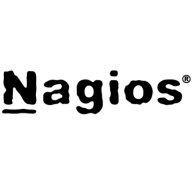


Find out what your peers are saying about Zabbix, Auvik, Datadog and others in IT Infrastructure Monitoring.
The return is more of value and savings in preventing costly downtime, making the savings of about $60,000 which we would have lost without LogicMonitor, and in IT staff efficiency, we save approximately 15 hours a week.
I can definitely notice a difference in our posture, uptime, and ability to solve problems and resolve outages much quicker since we have had LogicMonitor in place.
Customer support is on point and very well trained.
The product mostly just works without issues.
As your company grows, you are able to scale effectively by just deploying additional collector machines.
The solution is scalable.
If the user interface isn’t presenting data well, it becomes difficult to manage when scaling.
It is very stable. I have never seen LogicMonitor itself go down.
I tried many other solutions at work, however, in terms of Nagios, I haven't seen any disruption or downtime.
It is very stable.
I wish the user interface would be customizable to allow users to create personal context-specific workspaces to hide irrelevant data, rather than trying to have a one-size-fits-all interface.
The container monitoring seems to be really behind compared to some bespoke cloud-native monitoring solutions that are designed around Kubernetes, containers, and ephemeral environments.
Many tools have poor user interfaces, making them hard to manage and navigate.
The GUI could be improved. It's a bit too basic.
We are using the free, open-source version.
The pricing for the Nagios XI product is good and better than other solutions.
The dynamic alerting and root cause analysis have helped us fix issues before they cause a full-blown outage or degrade performance for end users.
I was able to create ping monitoring of every virtual machine in our vSphere instance.
It has a very handy dashboard, providing live alerts and visibility for everything.
Nagios XI simplifies our setup and reduces the time spent configuring monitoring tools.
The alerting system is very effective.
| Product | Market Share (%) |
|---|---|
| Nagios Core | 3.1% |
| LogicMonitor | 2.1% |
| Nagios XI | 3.5% |
| Other | 91.3% |



| Company Size | Count |
|---|---|
| Small Business | 11 |
| Midsize Enterprise | 10 |
| Large Enterprise | 8 |
| Company Size | Count |
|---|---|
| Small Business | 20 |
| Midsize Enterprise | 11 |
| Large Enterprise | 22 |
| Company Size | Count |
|---|---|
| Small Business | 22 |
| Midsize Enterprise | 17 |
| Large Enterprise | 21 |
LogicMonitor offers flexible IT monitoring with customizable dashboards and robust alerting capabilities. It integrates seamlessly with third-party apps like ServiceNow and provides a single-pane view for diverse IT environments, aiding in proactive issue resolution and enhancing operational efficiency.
LogicMonitor stands out with its capability to monitor diverse infrastructures including Cisco Voice systems, data centers, and virtual environments. Supporting servers, storage, networking devices, and applications, it provides seamless integration with cloud services like AWS and Azure. Users leverage its scalability and flexibility, benefiting from dynamic thresholds, anomaly detection, and detailed visualization. All these features contribute to improved management of IT assets and streamlined operations. Users suggest improvements in mapping, reporting, and automation for remediation, desiring more customizations and an expansive application performance monitoring toolset.
What are LogicMonitor's key features?LogicMonitor is widely implemented across industries, providing monitoring for infrastructure in sectors like telecommunications, cloud computing, and managed services. Managed service providers particularly value its ability to track client environments, deliver proactive alerts, and generate comprehensive reports, while its integration with cloud platforms like AWS and Azure offers users centralized management and visibility into IT assets worldwide.
This is IT infrastructure monitoring's industry-standard, open-source core. Free without professional support services.
Nagios XI provides monitoring of all mission-critical infrastructure components, including applications, services, operating systems, network protocols, systems metrics, and network infrastructure. Third-party add-ons provide tools for monitoring virtually all in-house and external applications, services, and systems.
Nagios XI uses a powerful Core 4 monitoring engine that provides users with the highest levels of server monitoring performance. This high degree of performance enables nearly limitless scalability and monitoring powers.
With Nagios XI, stakeholders can check up on their infrastructure status using the role-based web interface. Sophisticated dashboards enable access to monitoring information and third-party data. Administrators can easily set up permissions so users can only access the infrastructure they are authorized to view.
Nagios XI Benefits and Features
Some of the benefits and top features of using Nagios XI include:
Reviews from Real Users
Nagios XI stands out among its competitors for a number of reasons. Several major ones are its integration options and monitoring abilities, as well as its alerting features.
David P., a senior DevOps engineer at EML Payments Ltd, writes, “We use Nagios as a network discovery tool. We use Nagios to maintain our uptime statistics and to monitor our services. It has allowed us to be much more sophisticated in our monitoring and alerting.”
An IT-OSS manager at a comms service provider notes, “Nagios XI has a custom API feature, and we can expose custom APIs for our integration. This is a great feature.”